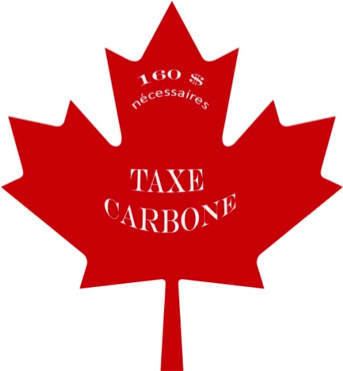Carbon taxes and caps may be most effective in economic theory, but smart regulation will produce better climate policy for our political reality.
This article has been translated in French, under the number 149 : Canada : quelle politique climatique efficace ?. It is published in collaboration with Policy Options (http://policyoptions.irpp.org) the digital magazine of the Institute for Research on Public Policy (IRPP), Montreal, Quebec, Canada.
Wisely, Prime Minister Justin Trudeau resisted the temptation at the Paris climate summit in December 2015 to double down on Stephen Harper[1]’s 2030 target for Canadian carbon dioxide (CO2) emissions.
While future emissions promises are easily made, effective climate policy is devilishly difficult. To have any chance, one needs to stay wise — which starts by avoiding advice from technology and policy advocates who themselves avoid inconvenient evidence from leading climate policy research and real-world experience. What does this evidence tell us?
1. Limits of carbon pricing
For one thing, it’s a mistake to expect a big contribution from energy efficiency. For three decades, governments and utilities have made efficiency the focus of their emissions reduction efforts, with negligible results.
Yes, energy efficiency is always improving, and we can slightly accelerate that trend. But humans require energy for basic needs and, more important, we keep inventing frivolous devices that use more. (Need evidence? Stroll through your local big-box store.)
The reality is that significant emissions reductions will happen only if we rapidly switch to zero- and partially-zero-emissions technologies.
Fortunately, these are now commercially available. But they won’t be widely adopted unless technologies that burn coal, oil and natural gas are phased out by regulations or made costly to operate by carbon pricing (Read : L’insertion des préoccupations environnementales dans les politiques de l’énergie paragraph 3.). The latter can be either a carbon tax, as in British Columbia, or the price of tradable CO2 permits under an emissions cap, as in Quebec.
1.1. A Canada-wide carbon price of 160$ would be necessary
Analysis by my research group finds that in order to achieve the 2030 Harper target, if oil sands are allowed to expand to the limit recently set by the Alberta government, a Canada-wide carbon price starting at $30 in 2017 must jump $10 each year to reach $160 in 2030.
In other words, significantly shifting to cars and trucks that rely on renewable electricity, ethanol and biodiesel would require raising gasoline prices by about 40 cents per litre (on top of other taxes and all production costs), which is the result of having a carbon price of $160.
1.2. The problem of its political acceptability
Most important of all, Prime Minister Trudeau must understand that relying solely on one of these two forms of carbon pricing to achieve even the seemingly modest Harper target may cost him his job. While carbon pricing has become a mantra for economists (Read : Energie et climat: la construction des politiques climatiques), environmentalists, academics, celebrities, media pundits and even corporate heads none of these people needs to get reelected. For politicians with survival instincts, it’s a different game.
1.3. The timid experiments of carbon-pricing in Canada
Canadian politicians have been contemplating, but then delaying or watering down, carbon pricing since 1989. I know, because in that year, as a newly minted energy economist at Simon Fraser University, I helped with Canada’s initial assessment of carbon pricing for Brian Mulroney’s government. As soon as we calculated the required increase in the price of gasoline, he balked. And so has every subsequent Canadian politician, with the partial exception of BC Premier Gordon Campbell.
In 2007, Campbell launched a tax of $10 per tonne of CO2, and he legislated $5 annual increases for the next four years, with the tax reaching $30 in 2012.
My research group did the analysis for him. Campbell expected to keep increasing the tax after 2012. But he was forced to step down in 2011, and his replacement, Christy Clark, froze the tax. Stuck at $30, it adds 7 cents per litre to the price of gasoline, which is a sixth of the increase likely needed to motivate car and truck purchasers to choose electric or biofuel options.
Today, a decade later, no provincial politician intends to significantly surpass BC’s $30 carbon price. Alberta says it will match it in 2018, followed by tiny annual increases (assuming the government survives). Quebec’s carbon price is $15 and is not slated to reach $30 for at least a decade. Ontario intends to match Quebec. And in all of these carbon pricing systems, there are partial exemptions for emissions-intensive, export-oriented industries, like the oil sands.
2. The performance of regulations
This is why, if he has survival instincts, Trudeau won’t depend solely on carbon pricing. Instead, he will do what serious jurisdictions do: regulate. And this is what we’ve done in Canada, although many fail to see it.
2.1. The actual and unrecognized efficiency of regulations
When asked which climate policy in Canada reduced the most CO2 emissions over the last decade, many people guess BC’s well-publicized carbon tax. They’re wrong. It was Ontario’s ban on coal-fired power, which reduced annual emissions by 25 megatonnes (MT).
Surely, then, BC’s carbon tax must have caused the most reductions in that province. Wrong again. The 2007 “clean electricity” regulation forced BC Hydro to cancel two private coal plants and its own gas plant. This cut BC’s projected annual emissions in 2020 by 12 to 18 MT. The carbon tax is slated to reduce 2020 annual emissions by 3 to 5 MT.
It’s the same in any jurisdiction that has significantly reduced emissions. Experts show that the carbon pricing policy in California, which Quebec has now joined, will have almost no effect by 2020. Ninety percent of that state’s current and projected reductions are attributed to innovative, flexible regulations on electricity, fuels, vehicles, buildings, appliances, equipment and land use.
Even Scandinavian countries, famous for two decades of carbon taxes, mostly used regulations to reduce emissions. For example, the greatest CO2 reductions in Sweden happened when publicly owned district heat providers were forced to switch fuels.
2.2. A better social acceptance despite a higher implicit carbon price.
Economists will point out that regulations may have high “implicit” carbon prices: this is the carbon price that would be required to cause the same amount of emissions reduction.
Indeed, I and other analysts have estimated an implicit carbon price for Ontario’s coal phase-out of $100 to $130, for BC’s clean electricity regulation of $80 to $120, and for California’s vehicle emissions standard of over $100.
But is this high implicit price a bad thing? If it is politically impossible to raise “explicit” carbon prices to $160 to achieve our Paris promise, then at least regulations can get to that price implicitly — today. And Trudeau might get to keep his job.
Many economists – who, I repeat, never face voters – argue that regulations are economically inefficient compared with carbon pricing. This is true, especially if the regulations are poorly designed. Too bad that so few of these economists are willing to apply their intelligence and creativity to the design of relatively efficient regulations that also overcome the huge blockade of political acceptability. Fortunately, some have.
2.3. The convincing exemple of the California’s vehicle emlissions standard
The history of California’s vehicle emissions standard is illustrative. Since 1990, that state has required vehicle manufacturers and retailers to achieve rising market shares for zero-emissions vehicles (ZEVs) and partial-zero-emissions vehicles (PZEVs).
Thanks to the influence of some creative designers (perhaps renegade economists), that policy does not pick technology winners and losers. For the ZEV category, for example, it is agnostic (when it comes to CO2 emissions) between pure electric, hydrogen fuel cell and pure biofuel. So, as they compete with each other, auto manufacturers have strong incentives to innovate technologies and better understand emerging consumer preferences.
And they quietly cross-subsidize to achieve their sales targets, charging people who buy gas guzzlers a bit more per vehicle in order to reduce the sales price of the higher-cost ZEVs, which they must sell to achieve their market share targets. Conveniently, there is no cost to government. Nor is government blamed for levying a high tax on gas guzzlers.
The California PZEV-ZEV regulation also allows manufacturers to trade among themselves in meeting sales targets, again reducing economic inefficiency.
And the regulation is flexibly applied in response to new information. In the early 2000s, manufacturers convinced regulators to increase the PZEV target in compensation for delaying the ZEV mandate, the reason being that their incredible success with developing hybrid vehicles like the Toyota Prius was achieving the overall emissions objective, and they needed more time to develop consumer-attractive electric and hydrogen options for ZEVs.
Aujourd’hui, les PZEV et les VEZ sont en tête de file, notamment grâce aux voitures électriques et aux hybrides rechargeables, ces dernières étant particulièrement appréciées par les conducteurs qui roulent tout au long de la journée, en ville ou d’une ville à l’autre. En fin de compte, c’est donc le marché, et non les autorités de régulation, qui détermine la contribution relative de chaque catégorie de véhicule à la réduction totale des émissions.
2.4. Benefits of regulations
What makes regulating CO2 emissions so convenient is that a few sectors and energy uses account for most emissions. Regulations on electricity generation, furnaces in buildings, boilers in industry, oil and gas production processes, and transportation propulsion systems, like the PZEV-ZEV program, can address 75 percent of Canada’s energy-related CO2 emissions.
A concern about regulations is that the implicit carbon price will differ from one sector of the economy to another, resulting again in economic inefficiency but all real-world carbon pricing schemes conveniently ignore the same inconsistency. Howerver government can adjust the stringency of regulations in different sectors over time in order to align implicit carbon prices.
3. Suggestions for an effective Canadian policy
This brief description does not do justice to the creative potential for implicit carbon pricing that is politically acceptable without a big cost in terms of economic efficiency. But how can this help Trudeau, who seeks to develop a national climate plan with the premiers in March?
3.1. The impossible carbon pricing
As expected, Trudeau didn’t manage to convince the provincial premiers at the march 2016 meeting to agree to nationwide, explicit carbon pricing (via tax or cap-and-trade) that comes close to the level needed to achieve Canada’s Paris promise – Remember, this is a carbon price that climbs rapidly to $160 by 2030.
He made another suggestion : to encourage the development of explicit provincial carbon pricing. But the message at that meeting was clear: if the Prime Minister wanted to use emissions pricing to meet climate targets, he would pay the political price. The result of the March impasse was typically Canadian: Trudeau and the premiers created study committees.
As a consequence, the prime minister should immediately develop an implicit carbon pricing strategy if he wants to fulfil his commitments.
3.2. Road tansport regulation
An obvious starting point is road transport. He can do this by following in the footsteps of Stephen Harper. Like previous prime ministers, Harper continued the practice of aligning Canada’s vehicle regulations with those in the US.
The US vehicle regulations focus on fuel economy and then tack on emissions criteria. Much better would be to take a page from California by implementing emissions-focused regulations that reinforce and accelerate that state’s effort to change vehicle propulsion systems away from burning gasoline and diesel — regardless of energy efficiency levels.
This policy can apply to cars and trucks. In the latter case, biodiesel is likely to play a larger role, although electricity and hydrogen cannot be ruled out. Again, we now have the technological options — mostly thanks to California’s earlier regulations — so we can let the market decide which of these does best.
My research group has estimated that a balanced and flexible PZEV-ZEV standard in Canada that forced vehicle manufacturers and retailers to hit market share targets of 10 percent of new sales by 2020 and 70 percent of new sales by 2030 would reduce annual emissions from this sector by 40 percent. The implicit carbon price is difficult to estimate, because it depends on the future price of oil. If the oil price stays low, the implicit carbon price of the standard is $150. If the oil price rises to average $60 per barrel over the next 13 years, the implicit carbon price is under $100 : switching away from gasoline-fuelled cars is less costly when their fuel is more expensive.
3.3. Electricity sector regulation
Another obvious sector to target is electricity. Again, Trudeau can turn up the dial on a soft Harper regulation so that, by 2030, all coal power plants must be closed or retrofitted with carbon capture and storage, and natural gas plants would be mostly restricted to backing up intermittent renewables like wind, solar and run-of-river hydro.
Because the impacts of the policy are not equal across the country, Trudeau might have to provide some help to Alberta, Saskatchewan and Nova Scotia, but it should not be much. Already Alberta and Nova Scotia have been working on major transitions away from coal. Trudeau’s regulation needs to make sure that the displaced coal is not all replaced with natural gas.
3.4. Other sectoral regulations
Non-auto transport (buses, trucks, trains, ships), industrial boilers, building space and water heating, and oil and gas are other obvious sectors and end uses for which it is possible to implement flexible, relatively efficient regulations.
My research group and I have found that modest carbon pricing by the provinces in concert with a targeted portfolio of such federal regulations, which are carefully monitored to approximately equate their implicit carbon prices, can enable Canada to achieve the Paris target without harming trade-exposed industries.
Conclusion
Although implementation of effective climate policies will never be easy, there are politically palatable options that have a proven track record of achieving reductions in Canada and abroad.
Yes, encourage emissions pricing which corresponds to the theoretical optimum. But heed the evidence on the effective and relatively efficient role that well-crafted regulations can play in driving the major technological and energy transition we so desperately need.
Rather than listen to those who ignore evidence, J.Trudeau should focus on developing creative solutions in a second-best world.
Notes et références
[1] Stephan Harper was Prime Minister of Canada from 2006 to 2015.
Bibliographie complémentaire
Jaccard Mark (2016). Want an effective climate policy? Heed the evidence. Policy Options, the public forum for the public good, February 2. Disponible sur: http://policyoptions.irpp.org/magazines/february-2016/want-an-effective-climatepolicy-heed-the-evidence/ [Consulté le 20/09/2017].
Jaccard Mark (2016). Penny wise and pound foolish on climate policy? Policy Options, the public forum for the public good, October 11 . Disponible sur: http://policyoptions.irpp.org/magazines/october-2016/penny-wise-and-pound-foolish-on-climate-policy/ [Consulté le 20/09/2017].
Jaccard Mark (2016) Effective climate change regulation: Let’s transform Canadian cars. Policy Options, the public forum for the public good, May 31. Disponible sur: http://policyoptions.irpp.org/magazines/may-2016/effective-climate-change-regulation-lets-transform-canadian-cars/ [Consulté le 20/09/2017]
L’Encyclopédie de l’Énergie est publiée par l’Association des Encyclopédies de l’Environnement et de l’Énergie (www.a3e.fr), contractuellement liée à l’université Grenoble Alpes et à Grenoble INP, et parrainée par l’Académie des sciences.
Pour citer cet article, merci de mentionner le nom de l’auteur, le titre de l’article et son URL sur le site de l’Encyclopédie de l’Énergie.
Les articles de l’Encyclopédie de l’Énergie sont mis à disposition selon les termes de la licence Creative Commons Attribution – Pas d’Utilisation Commerciale – Pas de Modification 4.0 International.








